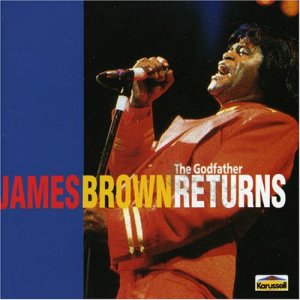Monthly Archives: February 2015
Abahambi – Freeway
A killer South African Jazz Funk album from Johannesburg, totally undiscovered and recorded in 1975.
The project Abahambi is a never mentioned band with the very famous bass-player Sipho Gumede, as the band leader.Unfortunately no more recording sessions of this particular formation are known. Sipho’s reputation grew higher in the early 80s, while he produced the african Combo „Sakhile“.
Produced by Thomas R. Mdakane
Recorded 1975 in Johannesburg
Jr. Walker & the All Stars
Walker & the All-Stars ended up on their Soul subsidiary, debuting for the label in 1964. In early 1965, they scored their first big hit with the dance tune “Shotgun,” which marked Walker’s vocal debut; in fact, the only reason he sang the song was that the vocalist he’d hired didn’t show up for the session, and he was somewhat flabbergasted by the label’s decision to leave his vocal intact. Berry Gordy’s instincts proved right, however, when “Shotgun” topped the R&B charts and hit the pop Top Five. A steady stream of mostly instrumental R&B chart hits followed, including “Do the Boomerang,” “Shake and Fingerpop,” and “How Sweet It Is (To Be Loved by You)” (Walker was, naturally, encouraged to record instrumental versions of Motown hits). In 1966, Graves left and was replaced by old cohort Billy “Stix” Nicks, and Walker’s hits continued apace with tunes like “I’m a Road Runner” and “Pucker Up Buttercup.” Toward the end of the ’60s, seeking to diversify their approach, the All-Stars began recording more ballad material, complete with string arrangements and Walker vocals. That approach resulted in the group’s second Top Five pop hit, the R&B number one “What Does It Take (To Win Your Love),” which helped refuel Walker’s career. He landed several more R&B Top Ten hits over the next few years, with the last coming in 1972.
James Brown – The Godfather Returns
Colosseum – Live 05
While Colosseum lasted only a little more than three years, producing five albums in that time, they made a great impression on the blooming subgenre of progressive rock, first with the energetic jazz- and blues-influenced Those Who Are About to Die Salute You, with its unusual chord progressions and variant song structures, and then with the epic Valentyne Suite. The title track of Valentyne Suite, a 17-minute composition, pushed keyboardist Dave Greenslade to the forefront of the band and into the spotlight of progressive music, a position he was increasingly uneasy with over the years. Drummer Jon Hiseman, on the other hand, gradually moved towards the jazz fusion area. Colosseum began to undergo personnel shifts with their third album, Grass Is Greener, with everyone calling it quits upon the departure of Greenslade in 1971. In 1975, Hiseman formed Colosseum II, but this time the mandate was firmly jazz fusion.
Jimmy Smith – Dot Com Blues
Organist Jimmy Smith’s Blue Note and Verve back-catalog is the stuff of legend, and the man plays as well on Dot Com Blues as he ever has. But this session is more than another Jimmy Smith album. At times you wonder where Jimmy is among all the accompanying star power, but if you listen, he is still there, rubbing the honeyed keys as B.B. King, Etta James, Dr. John, and Keb Mo wail and work it. Smith shows he is still the master of the blueswalk in “8 Counts for Rita,” “C.C. Rider,” “Tuition Blues,” and the title track, as well as on a sumptuously slow version of “Mood Indigo.” Here, Smith solos with gritty abandon in a small-group setting with such notables as guitarist Russell Malone, drummer Harvey Mason, and percussionist Lenny Castro. Smith is more often felt than heard elsewhere, though, and maybe that is understandable when Etta James lets rips on a wobbly version of “I Just Wanna Make Love to You.” The opening “Only in It for the Money” is better balanced, perhaps because Dr. John understands the value of less-is-more and, as a fellow keyboardist, doesn’t want to step on Smith’s celebrated toes. Finally, B.B. King helps make “Three O’Clock Blues” a rocking blowout that transports the listener back to some rock & blues tent meeting circa 1956. Dot Com Blues proves that Jimmy Smith can still raise the rug and do what he does best, star power in attendance or not.
Blues Organ Grooves
Lucky Peterson – Beyond Cool
Here Lucky goes to Memphis. Several years into a solo career, the former blues whiz kid plays good keyboards and guitar, and sings stirringly on originals and covers from all over the black music map (Stevie Wonder, Jimi Hendrix, Les McCann & Eddie Harris, blues piano master Roosevelt Sykes, etc.) His modern soul-cum-blues is hot, sweaty, and aggressive, and he gets the job done in busy arrangements shared with the Memphis Horns, honey-throated back-up singers, and muscular hired guns like bassist Willie Weeks and drummer Crusher Green. Peterson had the good sense to collaborate with New Yorker Jim Payne when writing five songs for the album, including the killer slow blues instrumental that doubles as the album title.








